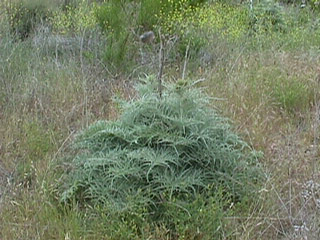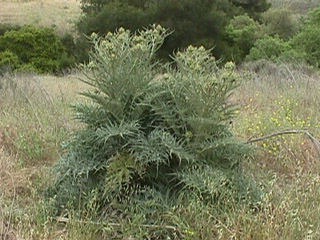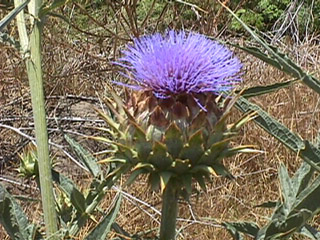

|

|


|

|
Artichoke thistle is a native of the Mediterranean
regions. It has since become an important weed in California.and the pampas of
Argentina, following its introduction by southern European immigrants who used
it as a vegetable.
When established, it dominates other plants by shading
and by competing for moisture and nutrients. Sometimes it also competes with
crops and impedes harvesting. Artichoke thistle is not poisonous but the prickly
nature of the plant deters animals from grazing a heavy infestation. However,
when hungry, they will eat Artichoke thistle foliage and survive on it, but it
has a low nutritive value and may cause stomach impaction and mechanical
injuries.
Curdling agent; Flowers; Leaves; Root; Stem. Flower buds - raw or cooked. A globe artichoke substitute. The flower buds are a bit smaller than the globe artichoke. The buds are harvested just before the flowers open, they are then usually boiled before being eaten. Only the base of each bract is eaten, plus the 'heart' or base that the petals grow from. The flavour is mild and pleasant and is felt by some people to be more delicate than the globe artichoke. Stems - cooked and used as a celery substitute. It is best to earth up the stems as they grow in order to blanch them and reduce their bitterness, these blanched stems can then be eaten cooked or in salads. In Italy raw strips of the stems are dipped into olive oil. We find these stems to be too bitter when eaten raw. Young leaves - raw or cooked. Eaten as a salad by the ancient Romans. Rather bitter. Root - cooked like parsnips. Tender, thick and fleshy, with an agreeable flavour. The dried flowers are a rennet substitute, used for curdling milks.
A tea made from the leaves and stems is anticholesterolemic, cholagogue, digestive, diuretic. It has a rather bitter flavour but is a very good liver tonic.
Cardoons are said to yield a good yellow dye.